
AnyGPT
Code for "AnyGPT: Unified Multimodal LLM with Discrete Sequence Modeling"
Stars: 730
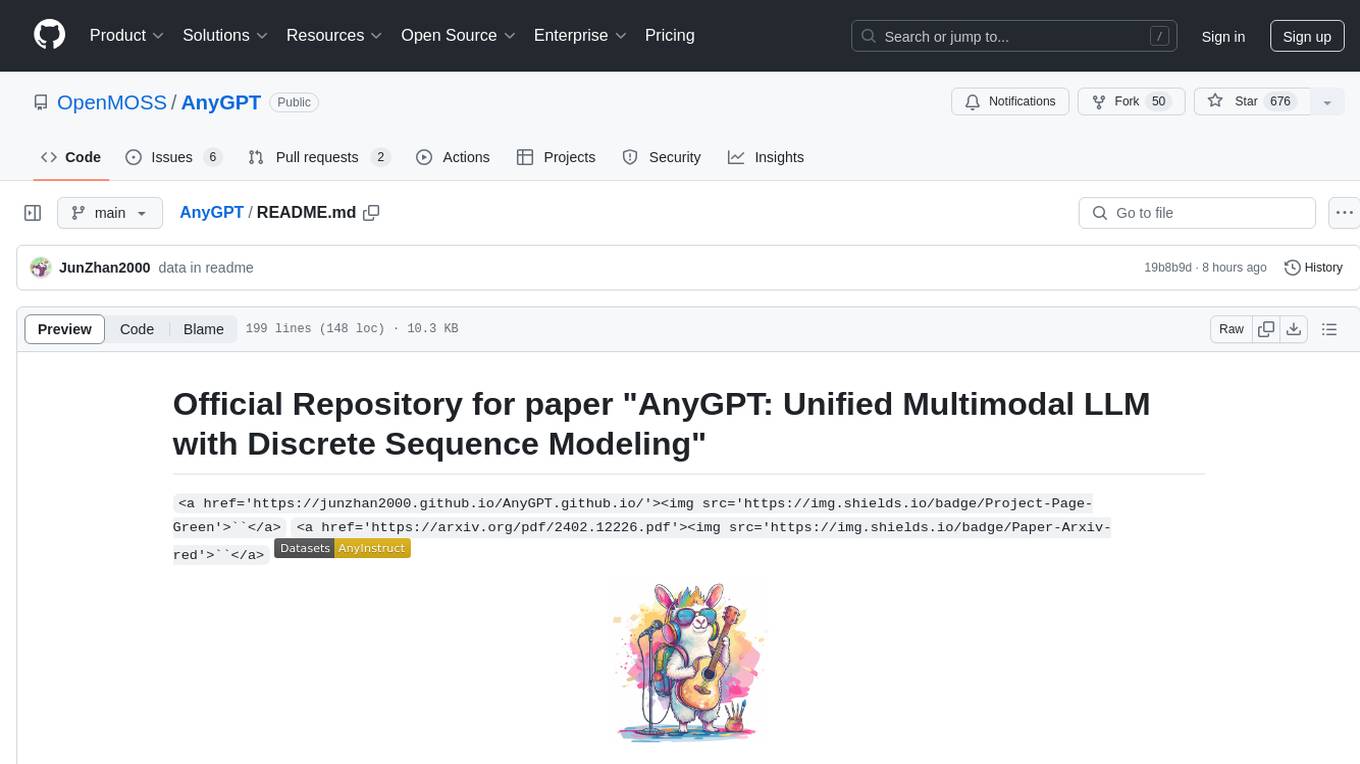
AnyGPT is a unified multimodal language model that utilizes discrete representations for processing various modalities like speech, text, images, and music. It aligns the modalities for intermodal conversions and text processing. AnyInstruct dataset is constructed for generative models. The model proposes a generative training scheme using Next Token Prediction task for training on a Large Language Model (LLM). It aims to compress vast multimodal data on the internet into a single model for emerging capabilities. The tool supports tasks like text-to-image, image captioning, ASR, TTS, text-to-music, and music captioning.
README:



We introduce AnyGPT, an any-to-any multimodal language model that utilizes discrete representations for the unified processing of various modalities, including speech, text, images, and music. The base model aligns the four modalities, allowing for intermodal conversions between different modalities and text. Furthermore, we constructed the AnyInstruct dataset based on various generative models, which contains instructions for arbitrary modal interconversion. Trained on this dataset, our chat model can engage in free multimodal conversations, where multimodal data can be inserted at will.
AnyGPT proposes a generative training scheme that converts all modal data into a unified discrete representation, using the Next Token Prediction task for unified training on a Large Language Model (LLM). From the perspective of 'compression is intelligence': when the quality of the Tokenizer is high enough, and the perplexity (PPL) of the LLM is low enough, it is possible to compress the vast amount of multimodal data on the internet into the same model, thereby emerging capabilities not present in a pure text-based LLM. Demos are shown in project page.
- [X] Base Model
- [X] Chat Model
- [X] Inference Code
- [X] Instruction Dataset
git clone https://github.com/OpenMOSS/AnyGPT.git
cd AnyGPT
conda create --name AnyGPT python=3.9
conda activate AnyGPT
pip install -r requirements.txt- Check the AnyGPT-base weights in fnlp/AnyGPT-base
- Check the AnyGPT-chat weights in fnlp/AnyGPT-chat
- Check the SpeechTokenizer and Soundstorm weights in fnlp/AnyGPT-speech-modules
- Check the SEED tokenizer weights in AILab-CVC/seed-tokenizer-2
The SpeechTokenizer is used for tokenizing and reconstructing speech, Soundstorm is responsible for completing paralinguistic information, and SEED-tokenizer is used for tokenizing images.
The model weights of unCLIP SD-UNet which are used to reconstruct the image, and Encodec-32k which are used to tokenize and reconstruct music will be downloaded automatically.
python anygpt/src/infer/cli_infer_base_model.py \
--model-name-or-path "path/to/AnyGPT-7B-base" \
--image-tokenizer-path 'path/to/model' \
--speech-tokenizer-path "path/to/model" \
--speech-tokenizer-config "path/to/config" \
--soundstorm-path "path/to/model" \
--output-dir "infer_output/base" for example
python anygpt/src/infer/cli_infer_base_model.py \
--model-name-or-path models/anygpt/base \
--image-tokenizer-path models/seed-tokenizer-2/seed_quantizer.pt \
--speech-tokenizer-path models/speechtokenizer/ckpt.dev \
--speech-tokenizer-config models/speechtokenizer/config.json \
--soundstorm-path models/soundstorm/speechtokenizer_soundstorm_mls.pt \
--output-dir "infer_output/base" The Base Model can perform various tasks, including text-to-image, image caption, Automatic Speech Recognition (ASR), Zero-shot Text-to-Speech (TTS), Text-to-Music, and Music Captioning.
We can perform inference following a specific instruction format.
- Text-to-Image
text|image|{caption}- example:
text|image|A bustling medieval market scene with vendors selling exotic goods under colorful tents
- Image Caption
image|text|{caption}- example:
image|text|static/infer/image/cat.jpg
- TTS(random voice)
text|speech|{speech content}- example:
text|speech|I could be bounded in a nutshell and count myself a king of infinite space.
- Zero-shot TTS
text|speech|{speech content}|{voice prompt}- example:
text|speech|I could be bounded in a nutshell and count myself a king of infinite space.|static/infer/speech/voice_prompt3.wav
- ASR
speech|text|{speech file path}- example:
speech|text|AnyGPT/static/infer/speech/voice_prompt2.wav
- Text-to-Music
text|music|{caption}- example:
text|music|features an indie rock sound with distinct elements that evoke a dreamy, soothing atmosphere
- Music Caption
music|text|{music file path}- example:
music|text|static/infer/music/features an indie rock sound with distinct element.wav
Notes
For different tasks, we used different language model decoding strategies. The decoding configuration files for image, speech, and music generation are located in config/image_generate_config.json, config/speech_generate_config.json, and config/music_generate_config.json, respectively. The decoding configuration files for other modalities to text are in config/text_generate_config.json. You can directly modify or add parameters to change the decoding strategy.
Due to limitations in data and training resources, the model's generation may still be unstable. You can generate multiple times or try different decoding strategies.
The speech and music response will be saved to .wav files, and the image response will be saved to a jpg. The filename will be a concatenation of the prompt and the time. The paths to these files will be indicated in the response.
python anygpt/src/infer/cli_infer_chat_model.py
\ --model-name-or-path 'path/to/model'
\ --image-tokenizer-path 'path/to/model'
\ --speech-tokenizer-path 'path/to/model'
\ --speech-tokenizer-config 'path/to/config'
\ --soundstorm-path 'path/to/model'
\ --output-dir "infer_output/chat"for example
python anygpt/src/infer/cli_infer_chat_model.py
\ --model-name-or-path models/anygpt/chat
\ --image-tokenizer-path models/seed-tokenizer-2/seed_quantizer.pt
\ --speech-tokenizer-path models/speechtokenizer/ckpt.dev
\ --speech-tokenizer-config models/speechtokenizer/config.json
\ --soundstorm-path models/soundstorm/speechtokenizer_soundstorm_mls.pt
\ --output-dir "infer_output/chat"Instruct format
interleaved|{text_instruction}|{modality}|{image_path}|{voice_prompt}|{speech_instruction}|{music_path}Where text_instruction is the input text command, speech_instruction is the input voice command; only one needs to be specified.
image_path and music_path are the paths for the input image and music, respectively. voice_prompt is the specified tone of the model's response; if not specified, a random tone is used.
modality refers to the type of output modality, which can be chosen as speech, image, or music; otherwise, it is considered as text. This will only affect which decoding configuration file under the config directory is used by the model (this is because the model's training is limited, leading to different decoding strategies for different modalities). It can also decode token by token, modifying the decoding strategy to the corresponding modality when generating the start token of the modality.
example
- interleaved||image|||static/infer/speech/instruction/Can you draw me a picture of a sunny beach.wav
- interleaved||music|||static/infer/speech/instruction/Give me a similar style of music.wav
To clear the conversation history, please input |clear
Please refer to scripts/stage1_pretrain.sh and scripts/stage2_sft.sh
We provide training data samples for reference. The organization of training formats includes pre-training data in data/pretrain and instruction data in data/instruction. For prompts of different tasks, refer to task_prompts, such as plain text dialogue, voice command text reply, text command voice reply, and special prompts for various tasks. You need to process multi-modal data into multi-round dialogue format according to the task template in advance. We use a voice conversation as an example in the command data, corresponding to the use of task_prompts in the "Speech-Instruction" and "Speech-Response":
[
{
"role": "user",
"message": "<sosp><🗣️1><🗣️1><🗣️1><eosp> Please acknowledge the user's vocal input, create a textual response"
},
{
"role": "assistant",
"message": "<-Ins-> hello, how are you\n <-Res-> I am fine, thank you <sosp><🗣️2><🗣️2><🗣️2><eosp>"
}
]- SpeechGPT, Vicuna: The codebase we built upon.
- We thank the great work from SpeechTokenizer,soundstorm-speechtokenizer, SEED-tokenizer,
AnyGPT is released under the original License of LLaMA2.
If you find AnyGPT and AnyInstruct useful in your research or applications, please kindly cite:
@article{zhan2024anygpt,
title={AnyGPT: Unified Multimodal LLM with Discrete Sequence Modeling},
author={Zhan, Jun and Dai, Junqi and Ye, Jiasheng and Zhou, Yunhua and Zhang, Dong and Liu, Zhigeng and Zhang, Xin and Yuan, Ruibin and Zhang, Ge and Li, Linyang and others},
journal={arXiv preprint arXiv:2402.12226},
year={2024}
}
For Tasks:
Click tags to check more tools for each tasksFor Jobs:
Alternative AI tools for AnyGPT
Similar Open Source Tools

AnyGPT
AnyGPT is a unified multimodal language model that utilizes discrete representations for processing various modalities like speech, text, images, and music. It aligns the modalities for intermodal conversions and text processing. AnyInstruct dataset is constructed for generative models. The model proposes a generative training scheme using Next Token Prediction task for training on a Large Language Model (LLM). It aims to compress vast multimodal data on the internet into a single model for emerging capabilities. The tool supports tasks like text-to-image, image captioning, ASR, TTS, text-to-music, and music captioning.
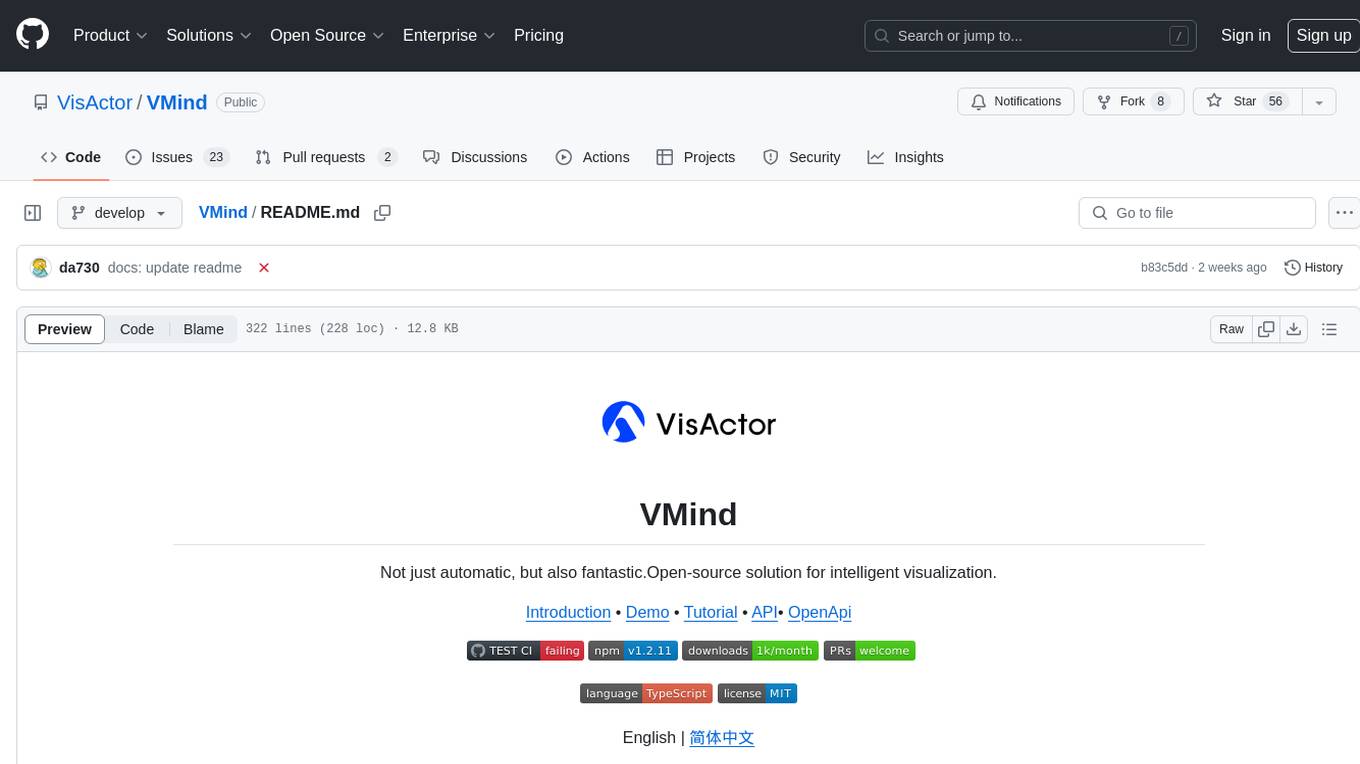
VMind
VMind is an open-source solution for intelligent visualization, providing an intelligent chart component based on LLM by VisActor. It allows users to create chart narrative works with natural language interaction, edit charts through dialogue, and export narratives as videos or GIFs. The tool is easy to use, scalable, supports various chart types, and offers one-click export functionality. Users can customize chart styles, specify themes, and aggregate data using LLM models. VMind aims to enhance efficiency in creating data visualization works through dialogue-based editing and natural language interaction.
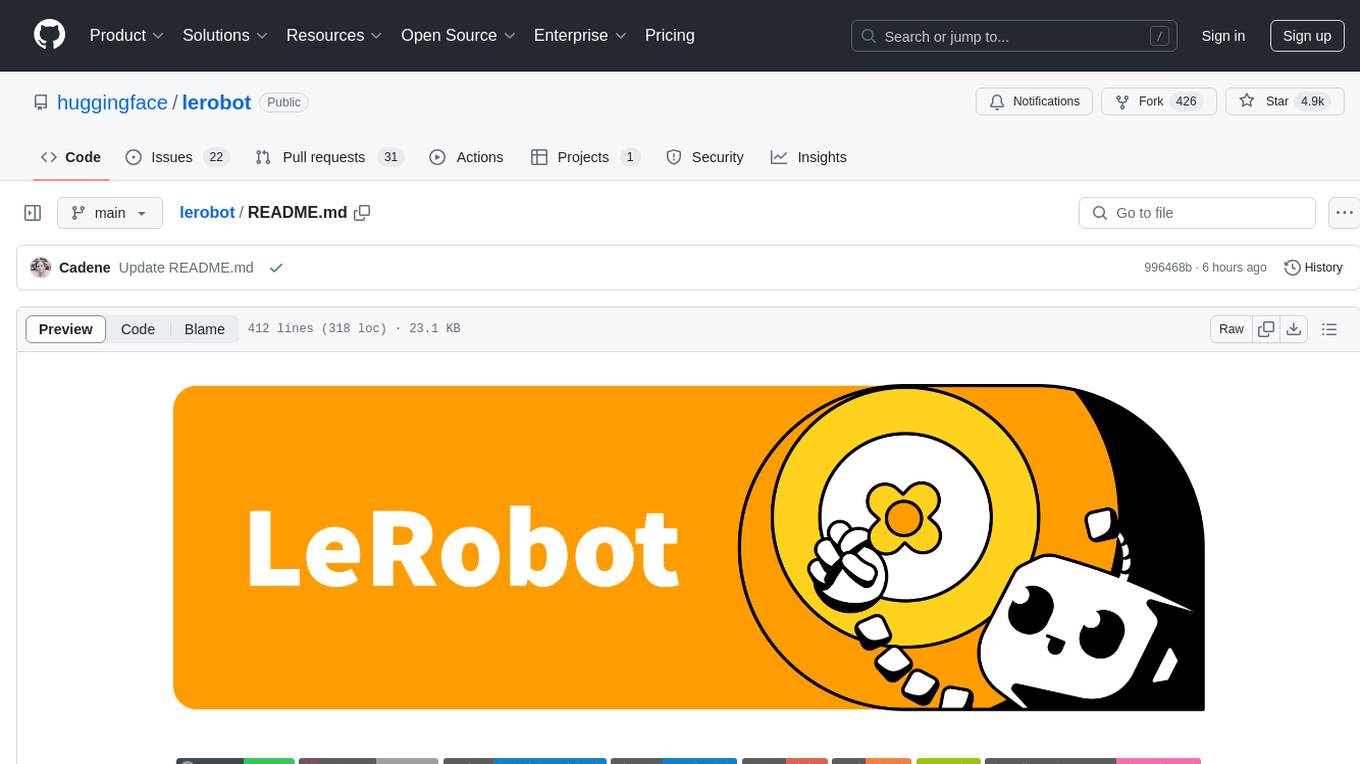
lerobot
LeRobot is a state-of-the-art AI library for real-world robotics in PyTorch. It aims to provide models, datasets, and tools to lower the barrier to entry to robotics, focusing on imitation learning and reinforcement learning. LeRobot offers pretrained models, datasets with human-collected demonstrations, and simulation environments. It plans to support real-world robotics on affordable and capable robots. The library hosts pretrained models and datasets on the Hugging Face community page.
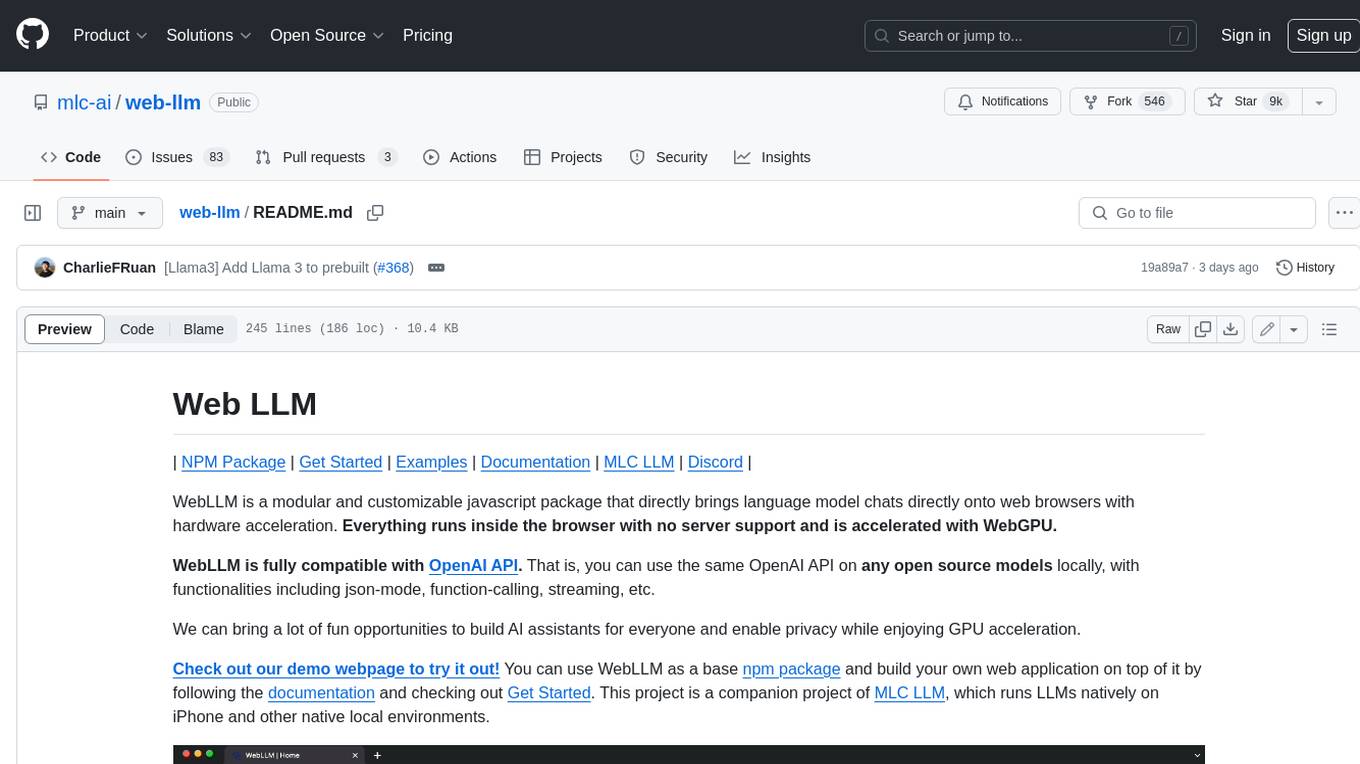
web-llm
WebLLM is a modular and customizable javascript package that directly brings language model chats directly onto web browsers with hardware acceleration. Everything runs inside the browser with no server support and is accelerated with WebGPU. WebLLM is fully compatible with OpenAI API. That is, you can use the same OpenAI API on any open source models locally, with functionalities including json-mode, function-calling, streaming, etc. We can bring a lot of fun opportunities to build AI assistants for everyone and enable privacy while enjoying GPU acceleration.
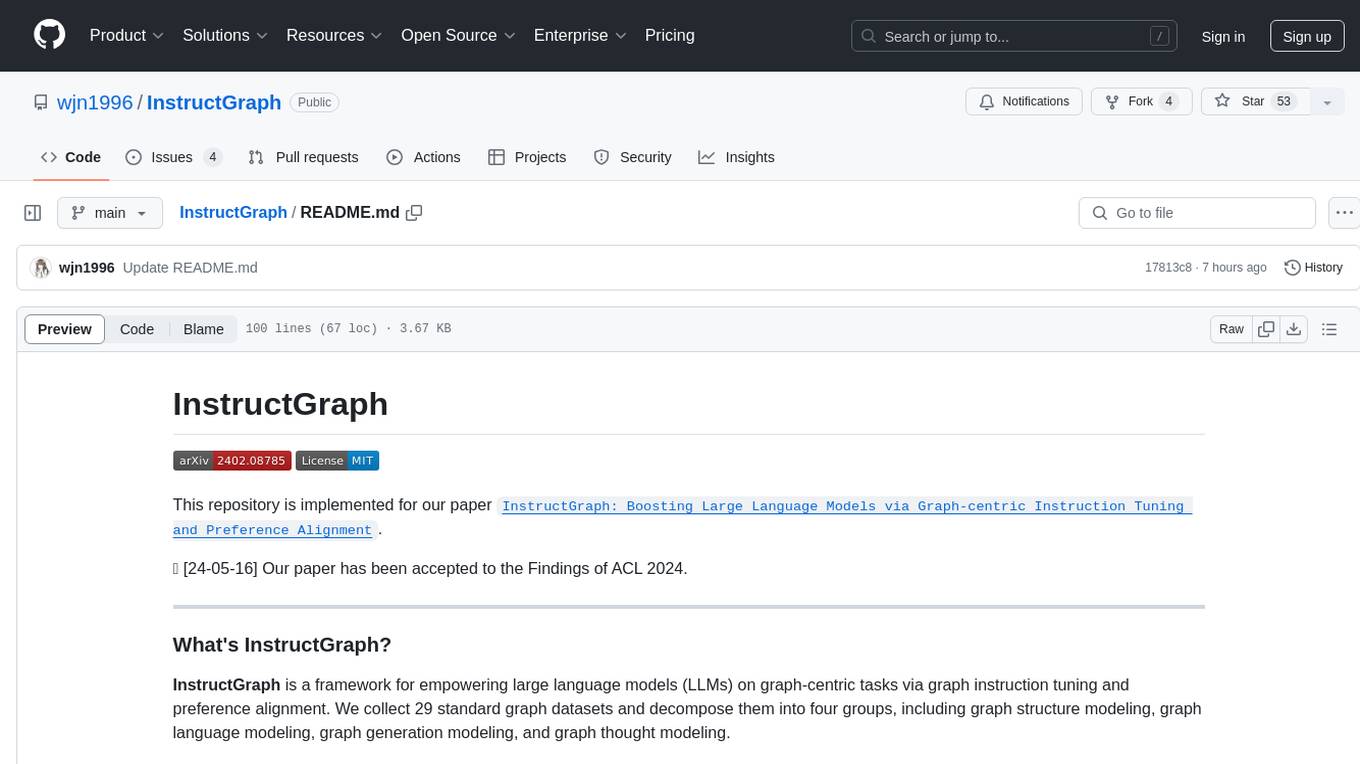
InstructGraph
InstructGraph is a framework designed to enhance large language models (LLMs) for graph-centric tasks by utilizing graph instruction tuning and preference alignment. The tool collects and decomposes 29 standard graph datasets into four groups, enabling LLMs to better understand and generate graph data. It introduces a structured format verbalizer to transform graph data into a code-like format, facilitating code understanding and generation. Additionally, it addresses hallucination problems in graph reasoning and generation through direct preference optimization (DPO). The tool aims to bridge the gap between textual LLMs and graph data, offering a comprehensive solution for graph-related tasks.
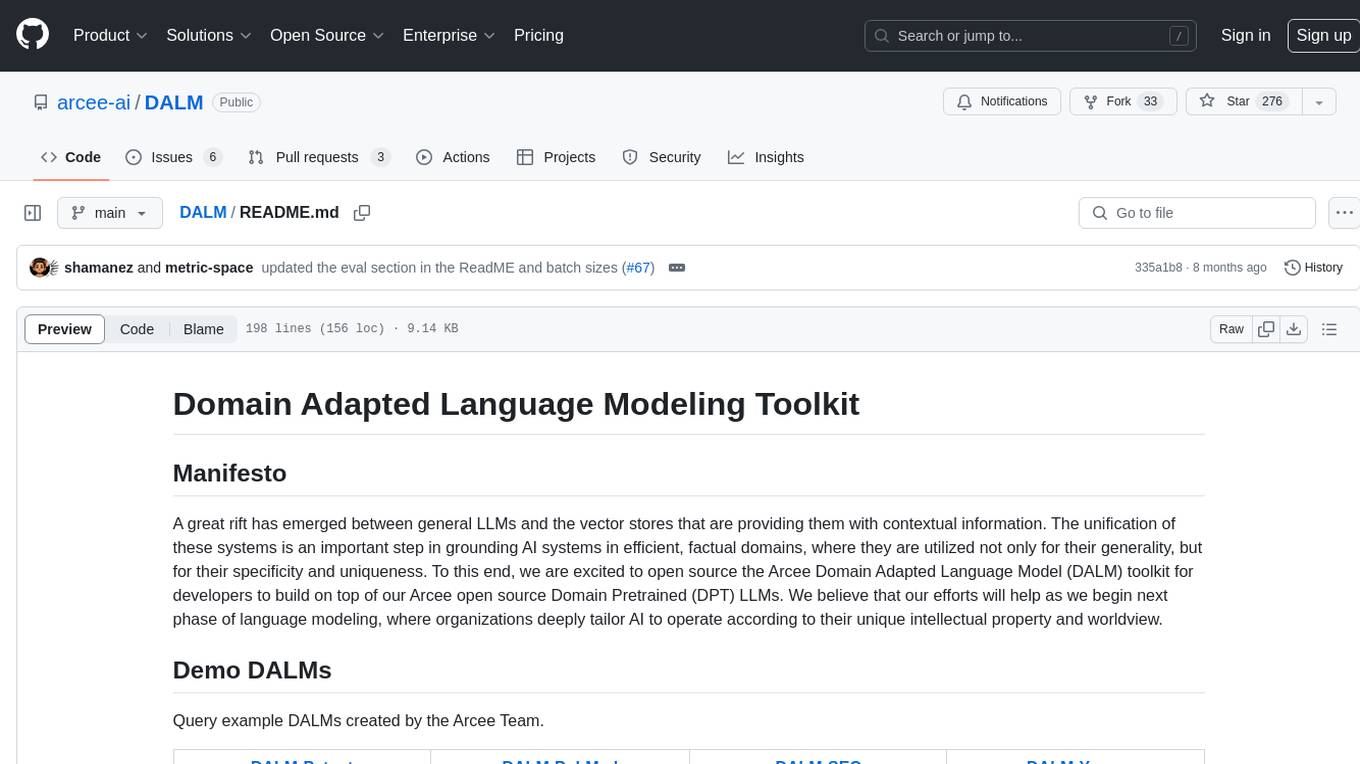
DALM
The DALM (Domain Adapted Language Modeling) toolkit is designed to unify general LLMs with vector stores to ground AI systems in efficient, factual domains. It provides developers with tools to build on top of Arcee's open source Domain Pretrained LLMs, enabling organizations to deeply tailor AI according to their unique intellectual property and worldview. The toolkit contains code for fine-tuning a fully differential Retrieval Augmented Generation (RAG-end2end) architecture, incorporating in-batch negative concept alongside RAG's marginalization for efficiency. It includes training scripts for both retriever and generator models, evaluation scripts, data processing codes, and synthetic data generation code.
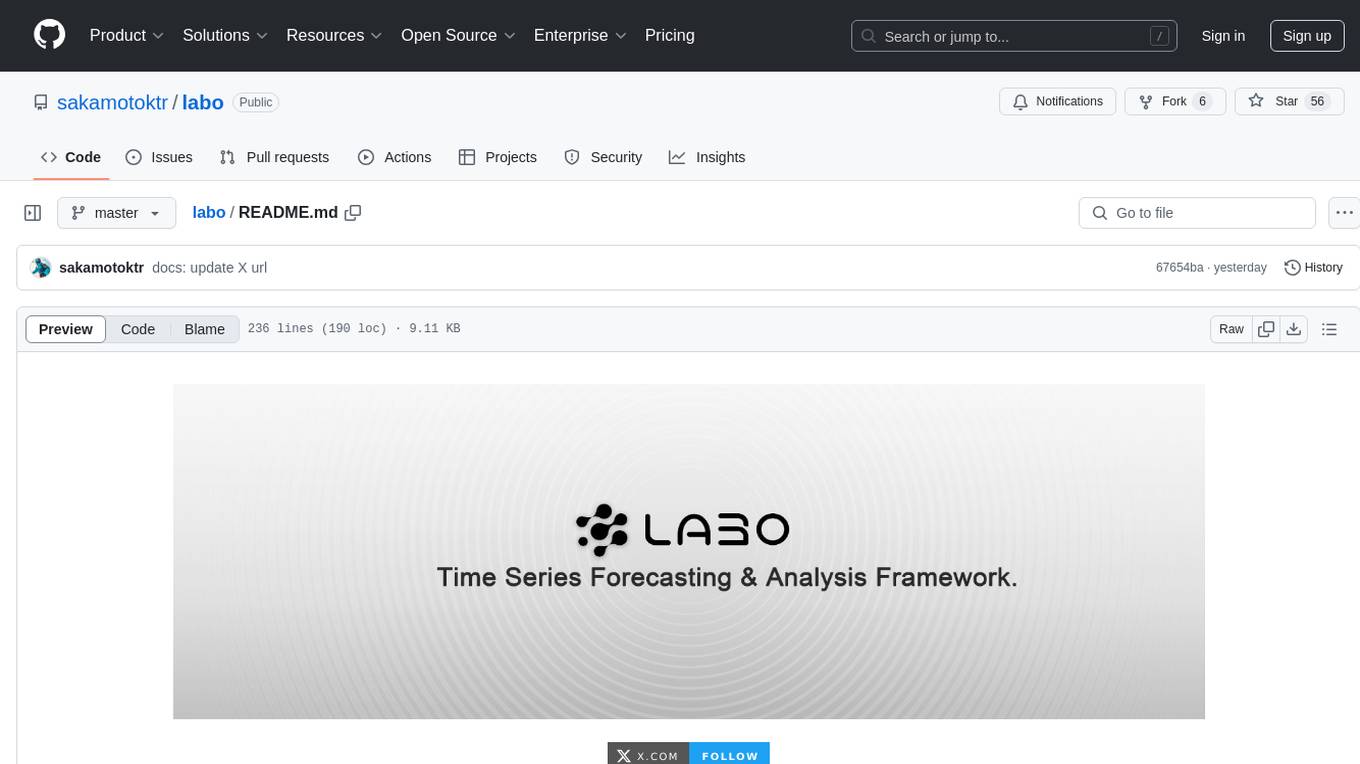
labo
LABO is a time series forecasting and analysis framework that integrates pre-trained and fine-tuned LLMs with multi-domain agent-based systems. It allows users to create and tune agents easily for various scenarios, such as stock market trend prediction and web public opinion analysis. LABO requires a specific runtime environment setup, including system requirements, Python environment, dependency installations, and configurations. Users can fine-tune their own models using LABO's Low-Rank Adaptation (LoRA) for computational efficiency and continuous model updates. Additionally, LABO provides a Python library for building model training pipelines and customizing agents for specific tasks.
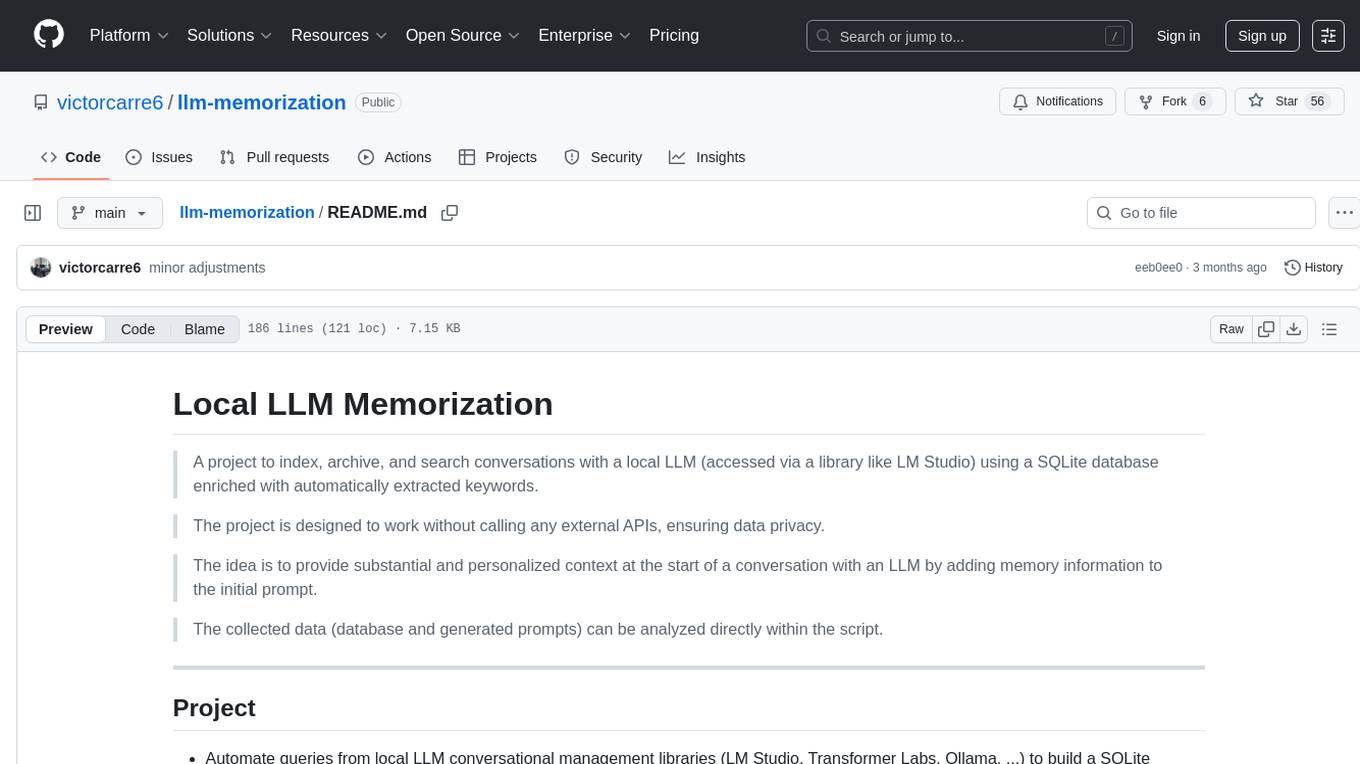
llm-memorization
The 'llm-memorization' project is a tool designed to index, archive, and search conversations with a local LLM using a SQLite database enriched with automatically extracted keywords. It aims to provide personalized context at the start of a conversation by adding memory information to the initial prompt. The tool automates queries from local LLM conversational management libraries, offers a hybrid search function, enhances prompts based on posed questions, and provides an all-in-one graphical user interface for data visualization. It supports both French and English conversations and prompts for bilingual use.
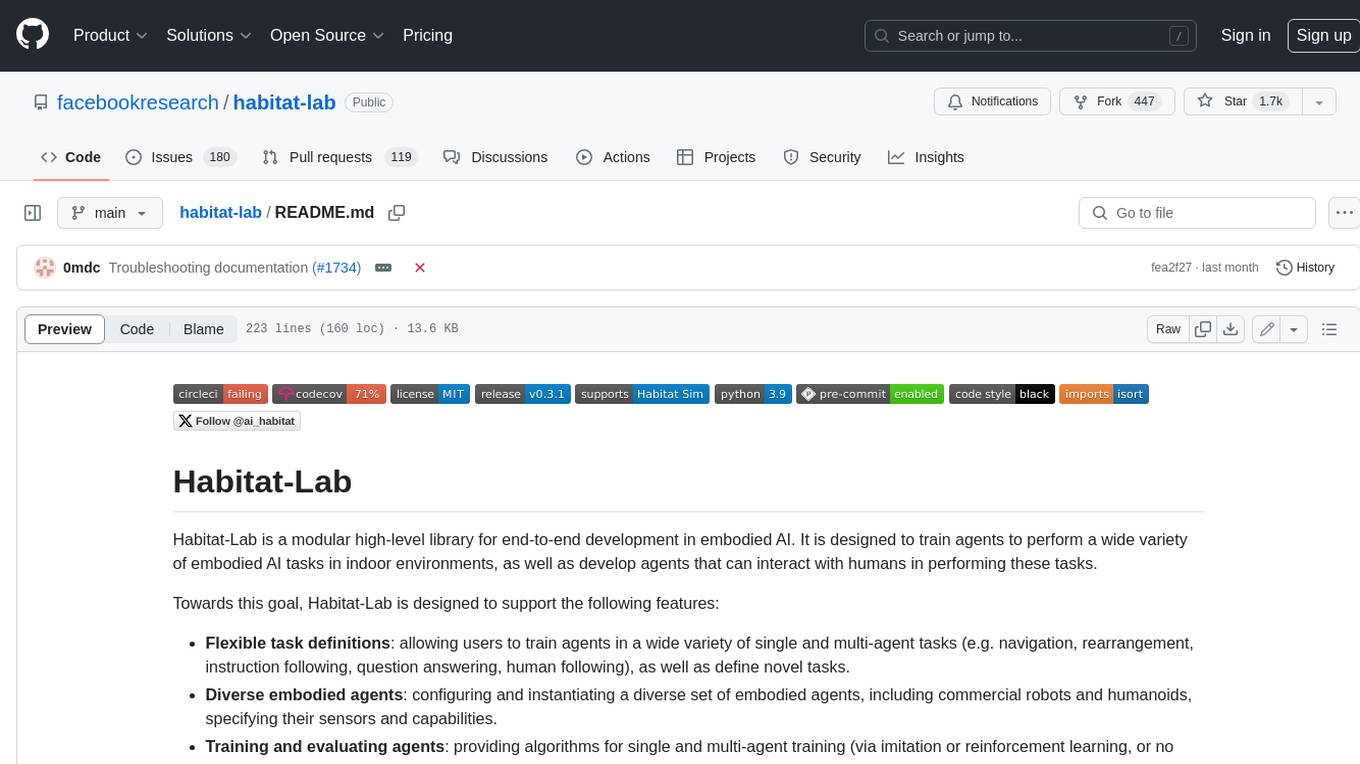
habitat-lab
Habitat-Lab is a modular high-level library for end-to-end development in embodied AI. It is designed to train agents to perform a wide variety of embodied AI tasks in indoor environments, as well as develop agents that can interact with humans in performing these tasks.
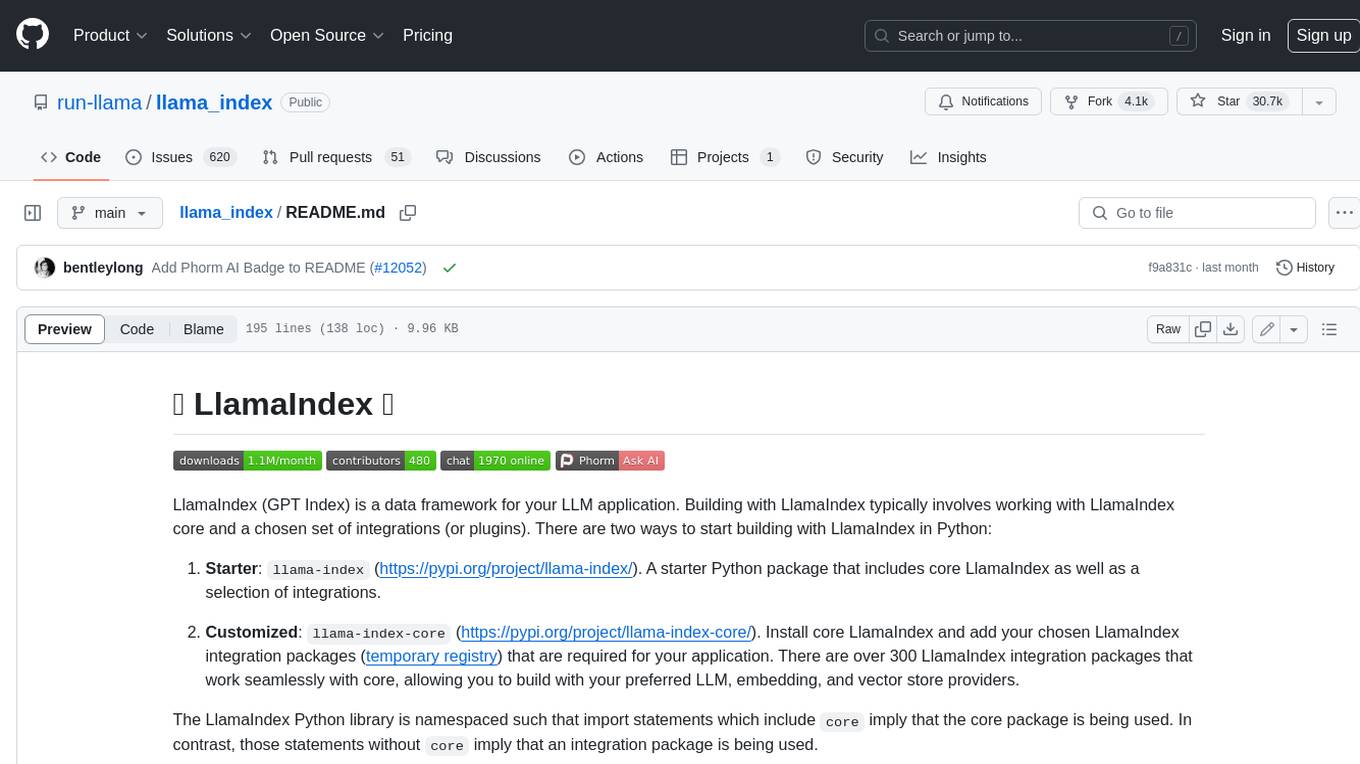
llama_index
LlamaIndex is a data framework for building LLM applications. It provides tools for ingesting, structuring, and querying data, as well as integrating with LLMs and other tools. LlamaIndex is designed to be easy to use for both beginner and advanced users, and it provides a comprehensive set of features for building LLM applications.
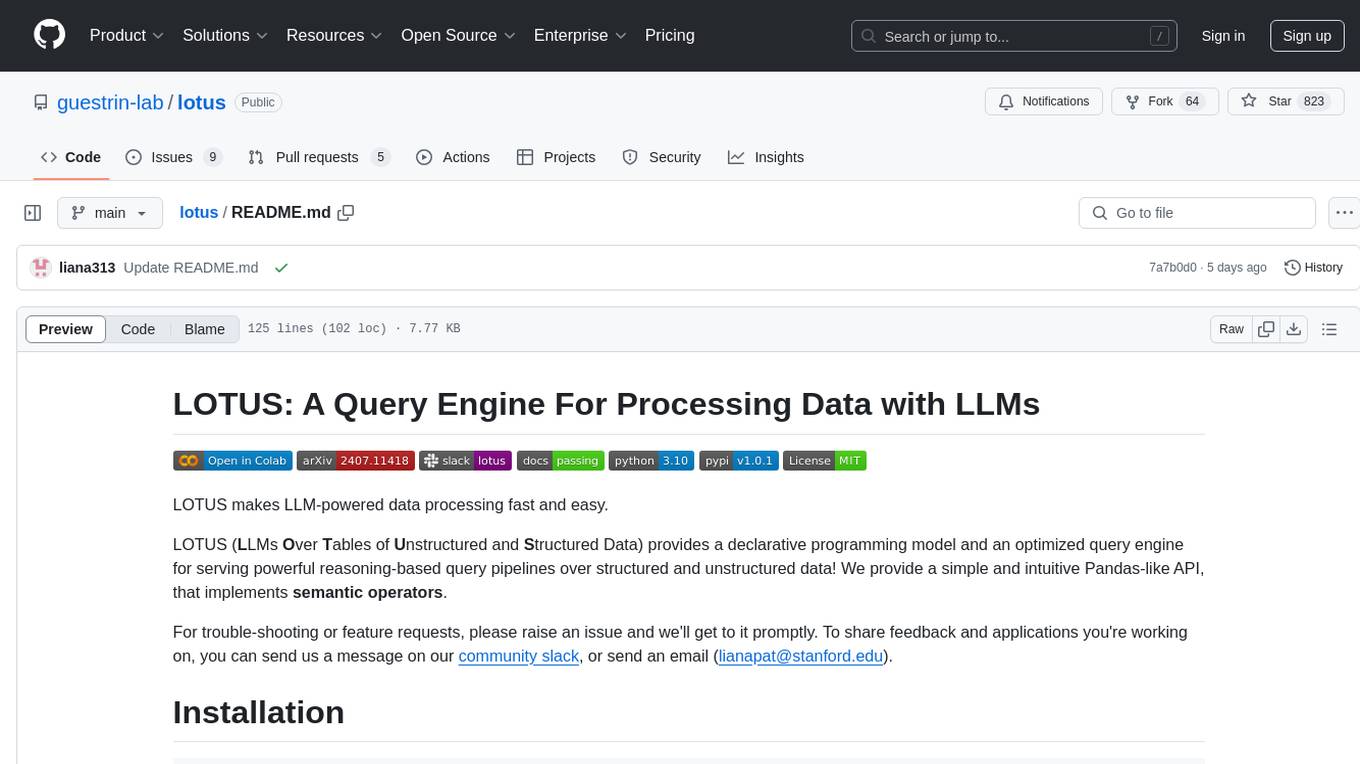
lotus
LOTUS (LLMs Over Tables of Unstructured and Structured Data) is a query engine that provides a declarative programming model and an optimized query engine for reasoning-based query pipelines over structured and unstructured data. It offers a simple and intuitive Pandas-like API with semantic operators for fast and easy LLM-powered data processing. The tool implements a semantic operator programming model, allowing users to write AI-based pipelines with high-level logic and leaving the rest of the work to the query engine. LOTUS supports various semantic operators like sem_map, sem_filter, sem_extract, sem_agg, sem_topk, sem_join, sem_sim_join, and sem_search, enabling users to perform tasks like mapping records, filtering data, aggregating records, and more. The tool also supports different model classes such as LM, RM, and Reranker for language modeling, retrieval, and reranking tasks respectively.
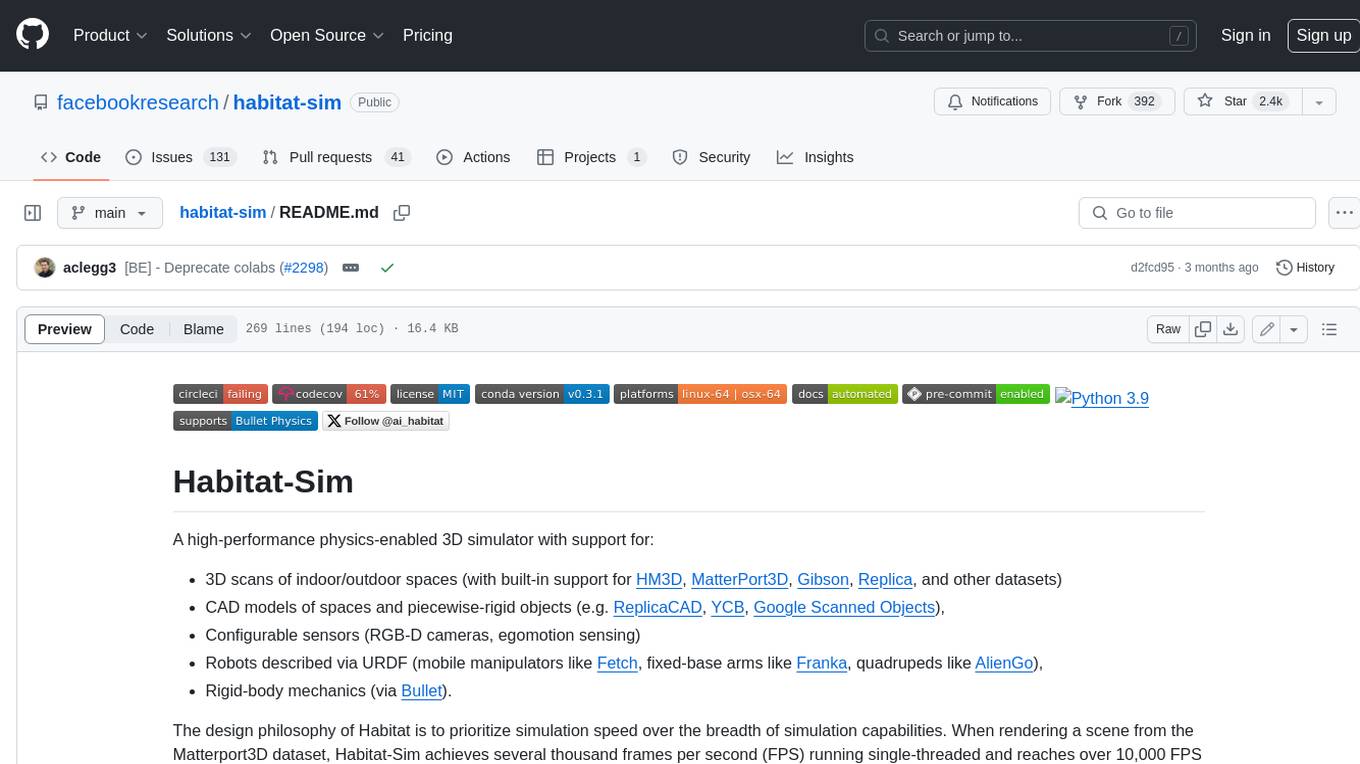
habitat-sim
Habitat-Sim is a high-performance physics-enabled 3D simulator with support for 3D scans of indoor/outdoor spaces, CAD models of spaces and piecewise-rigid objects, configurable sensors, robots described via URDF, and rigid-body mechanics. It prioritizes simulation speed over the breadth of simulation capabilities, achieving several thousand frames per second (FPS) running single-threaded and over 10,000 FPS multi-process on a single GPU when rendering a scene from the Matterport3D dataset. Habitat-Sim simulates a Fetch robot interacting in ReplicaCAD scenes at over 8,000 steps per second (SPS), where each ‘step’ involves rendering 1 RGBD observation (128×128 pixels) and rigid-body dynamics for 1/30sec.
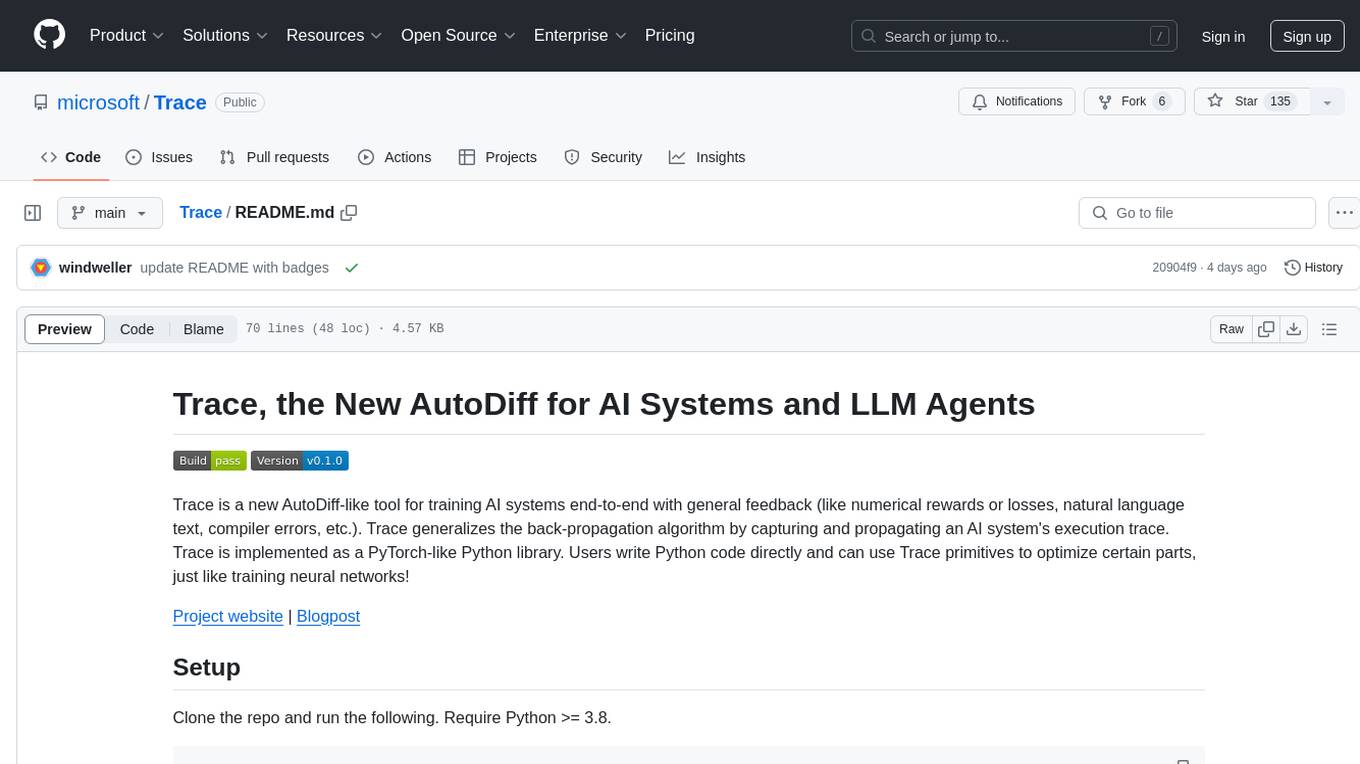
Trace
Trace is a new AutoDiff-like tool for training AI systems end-to-end with general feedback. It generalizes the back-propagation algorithm by capturing and propagating an AI system's execution trace. Implemented as a PyTorch-like Python library, users can write Python code directly and use Trace primitives to optimize certain parts, similar to training neural networks.
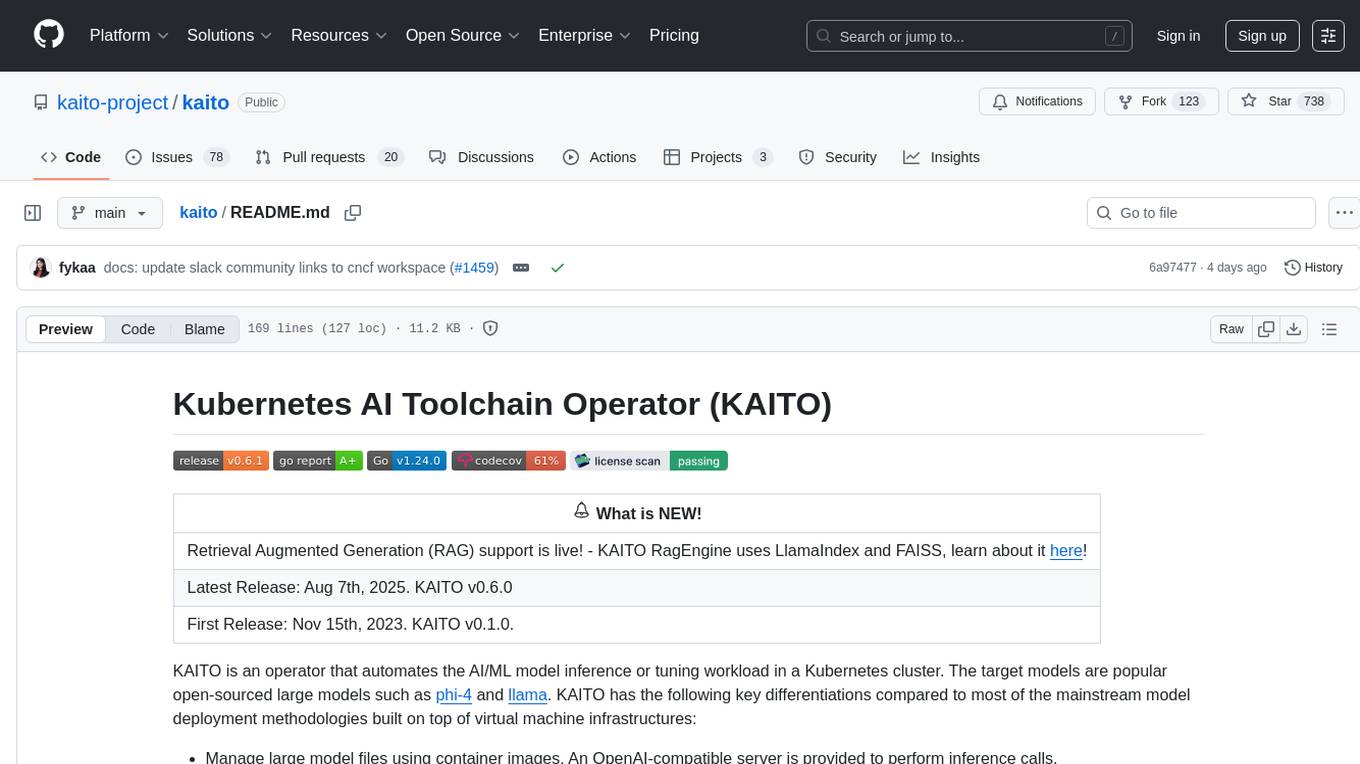
kaito
KAITO is an operator that automates the AI/ML model inference or tuning workload in a Kubernetes cluster. It manages large model files using container images, provides preset configurations to avoid adjusting workload parameters based on GPU hardware, supports popular open-sourced inference runtimes, auto-provisions GPU nodes based on model requirements, and hosts large model images in the public Microsoft Container Registry. Using KAITO simplifies the workflow of onboarding large AI inference models in Kubernetes.
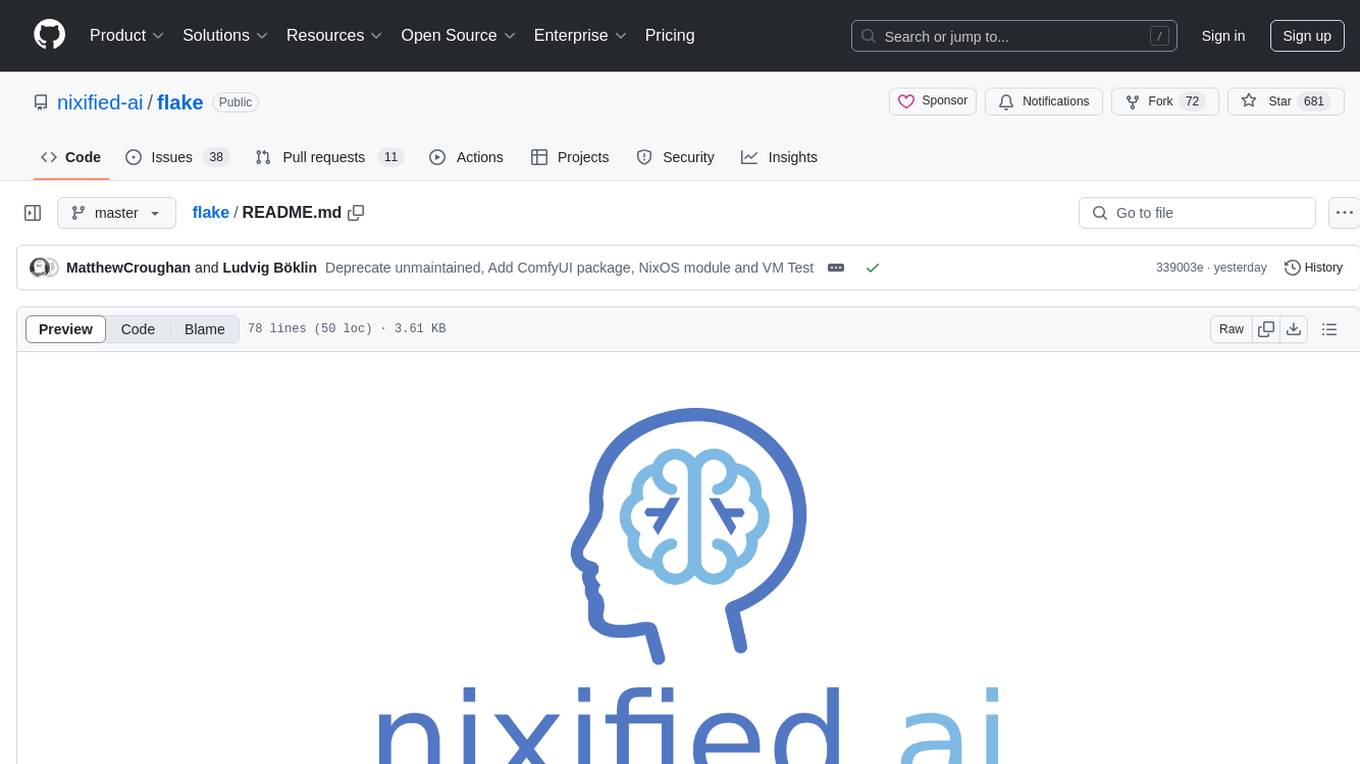
flake
Nixified.ai aims to simplify and provide access to a vast repository of AI executable code that would otherwise be challenging to run independently due to package management and complexity issues. The tool primarily runs on NixOS and Linux, with compatibility on Windows through NixOS-WSL. It can automatically utilize the GPU of the Windows host by setting LD_LIBRARY_PATH in the wrapper script. Users can explore the tool's offerings through the nix repl, with the main outputs including ComfyUI, a modular node-based Stable Diffusion WebUI, and deprecated packages like InvokeAI and textgen. To enable binary cache and save time building packages, users need to trust nixified-ai's binary cache by adding specific lines to their system configuration files.
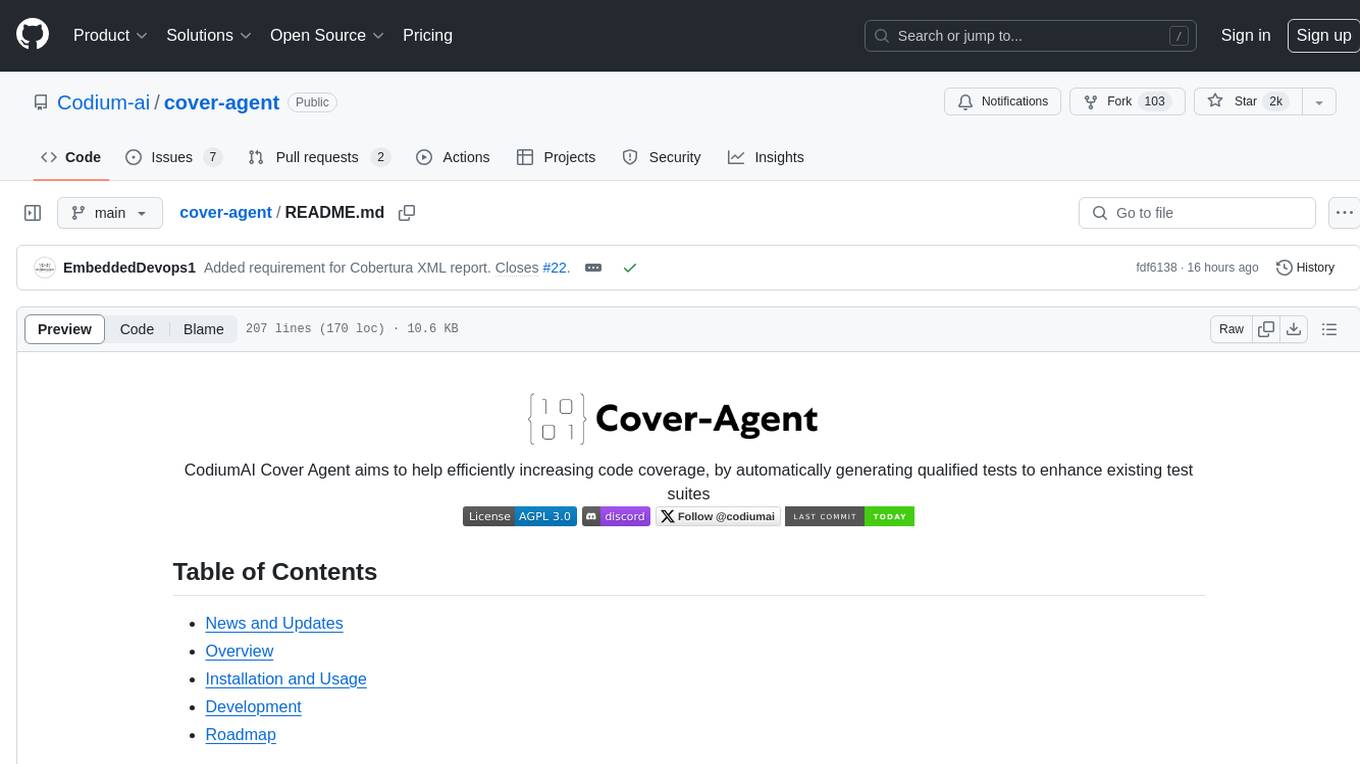
cover-agent
CodiumAI Cover Agent is a tool designed to help increase code coverage by automatically generating qualified tests to enhance existing test suites. It utilizes Generative AI to streamline development workflows and is part of a suite of utilities aimed at automating the creation of unit tests for software projects. The system includes components like Test Runner, Coverage Parser, Prompt Builder, and AI Caller to simplify and expedite the testing process, ensuring high-quality software development. Cover Agent can be run via a terminal and is planned to be integrated into popular CI platforms. The tool outputs debug files locally, such as generated_prompt.md, run.log, and test_results.html, providing detailed information on generated tests and their status. It supports multiple LLMs and allows users to specify the model to use for test generation.
For similar tasks

AnyGPT
AnyGPT is a unified multimodal language model that utilizes discrete representations for processing various modalities like speech, text, images, and music. It aligns the modalities for intermodal conversions and text processing. AnyInstruct dataset is constructed for generative models. The model proposes a generative training scheme using Next Token Prediction task for training on a Large Language Model (LLM). It aims to compress vast multimodal data on the internet into a single model for emerging capabilities. The tool supports tasks like text-to-image, image captioning, ASR, TTS, text-to-music, and music captioning.
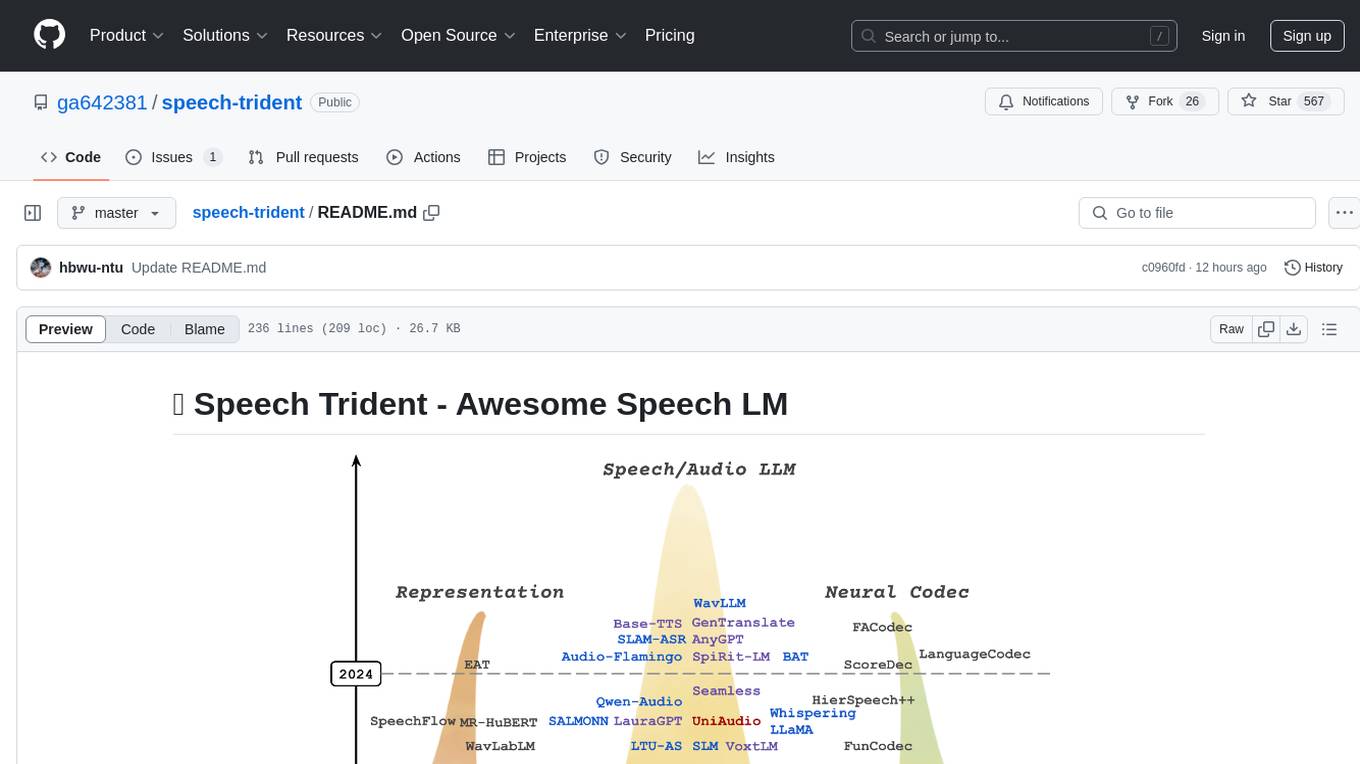
speech-trident
Speech Trident is a repository focusing on speech/audio large language models, covering representation learning, neural codec, and language models. It explores speech representation models, speech neural codec models, and speech large language models. The repository includes contributions from various researchers and provides a comprehensive list of speech/audio language models, representation models, and codec models.
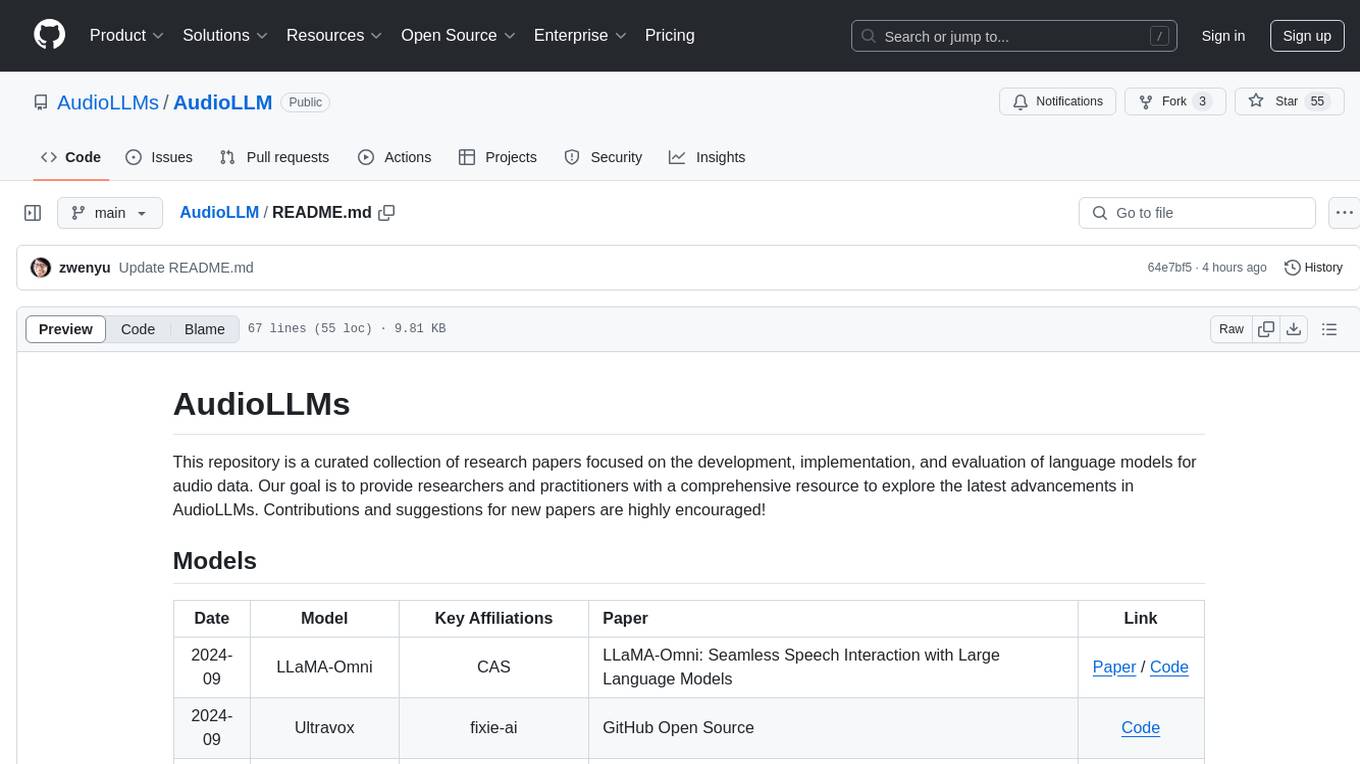
AudioLLM
AudioLLMs is a curated collection of research papers focusing on developing, implementing, and evaluating language models for audio data. The repository aims to provide researchers and practitioners with a comprehensive resource to explore the latest advancements in AudioLLMs. It includes models for speech interaction, speech recognition, speech translation, audio generation, and more. Additionally, it covers methodologies like multitask audioLLMs and segment-level Q-Former, as well as evaluation benchmarks like AudioBench and AIR-Bench. Adversarial attacks such as VoiceJailbreak are also discussed.
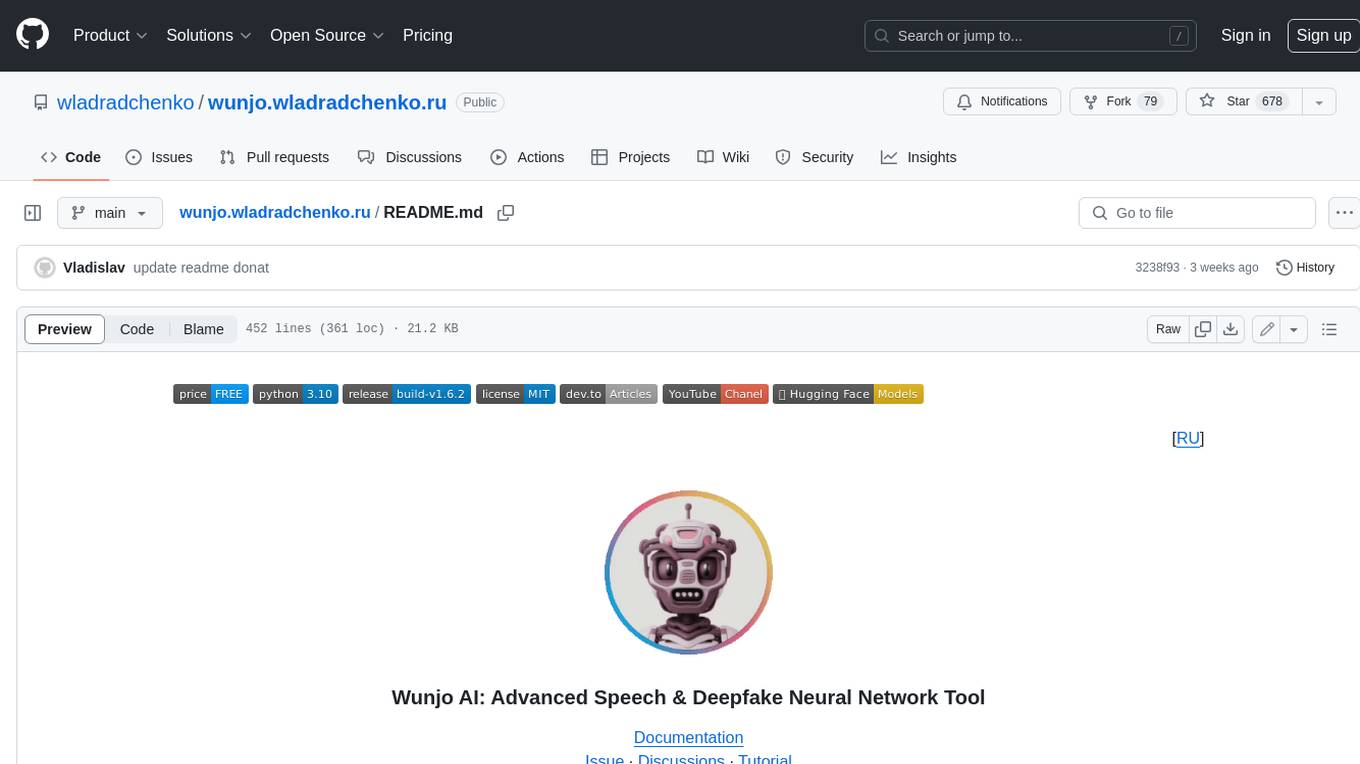
wunjo.wladradchenko.ru
Wunjo AI is a comprehensive tool that empowers users to explore the realm of speech synthesis, deepfake animations, video-to-video transformations, and more. Its user-friendly interface and privacy-first approach make it accessible to both beginners and professionals alike. With Wunjo AI, you can effortlessly convert text into human-like speech, clone voices from audio files, create multi-dialogues with distinct voice profiles, and perform real-time speech recognition. Additionally, you can animate faces using just one photo combined with audio, swap faces in videos, GIFs, and photos, and even remove unwanted objects or enhance the quality of your deepfakes using the AI Retouch Tool. Wunjo AI is an all-in-one solution for your voice and visual AI needs, offering endless possibilities for creativity and expression.
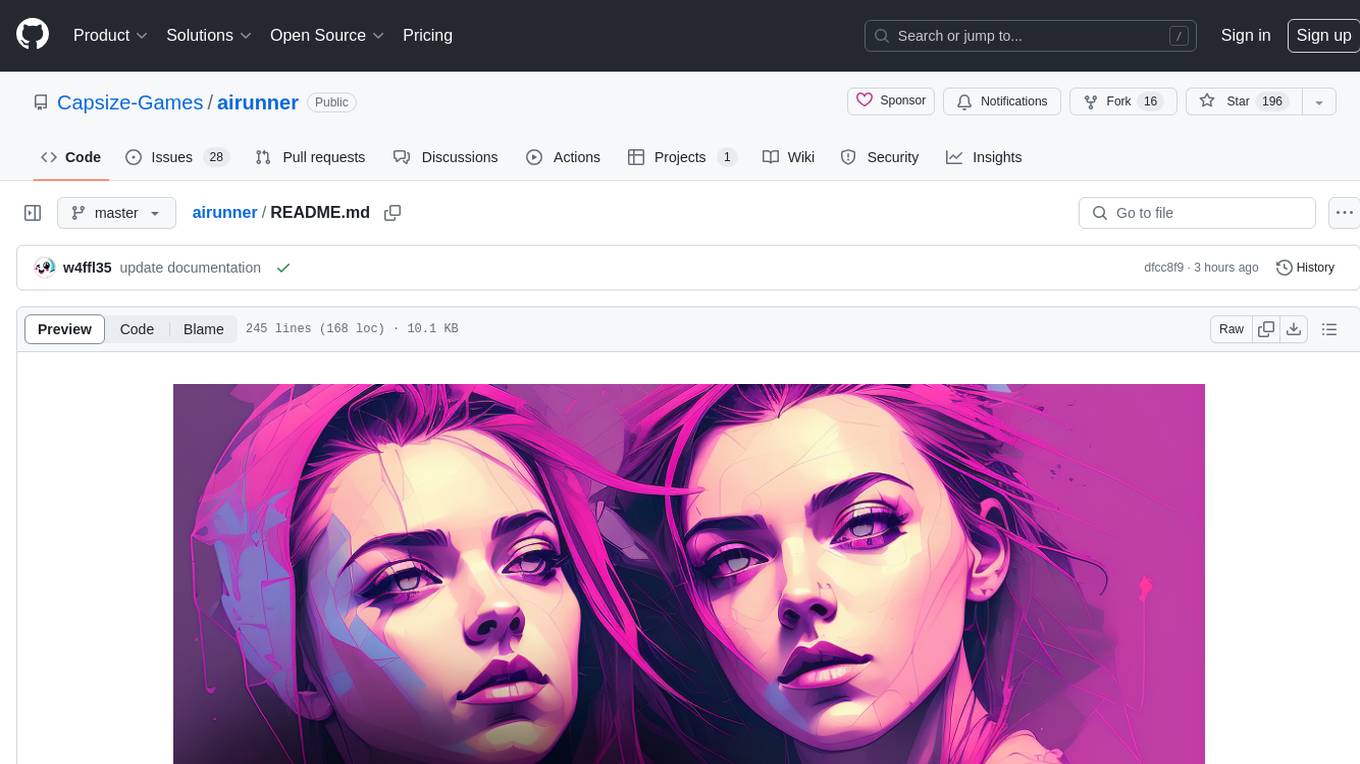
airunner
AI Runner is a multi-modal AI interface that allows users to run open-source large language models and AI image generators on their own hardware. The tool provides features such as voice-based chatbot conversations, text-to-speech, speech-to-text, vision-to-text, text generation with large language models, image generation capabilities, image manipulation tools, utility functions, and more. It aims to provide a stable and user-friendly experience with security updates, a new UI, and a streamlined installation process. The application is designed to run offline on users' hardware without relying on a web server, offering a smooth and responsive user experience.
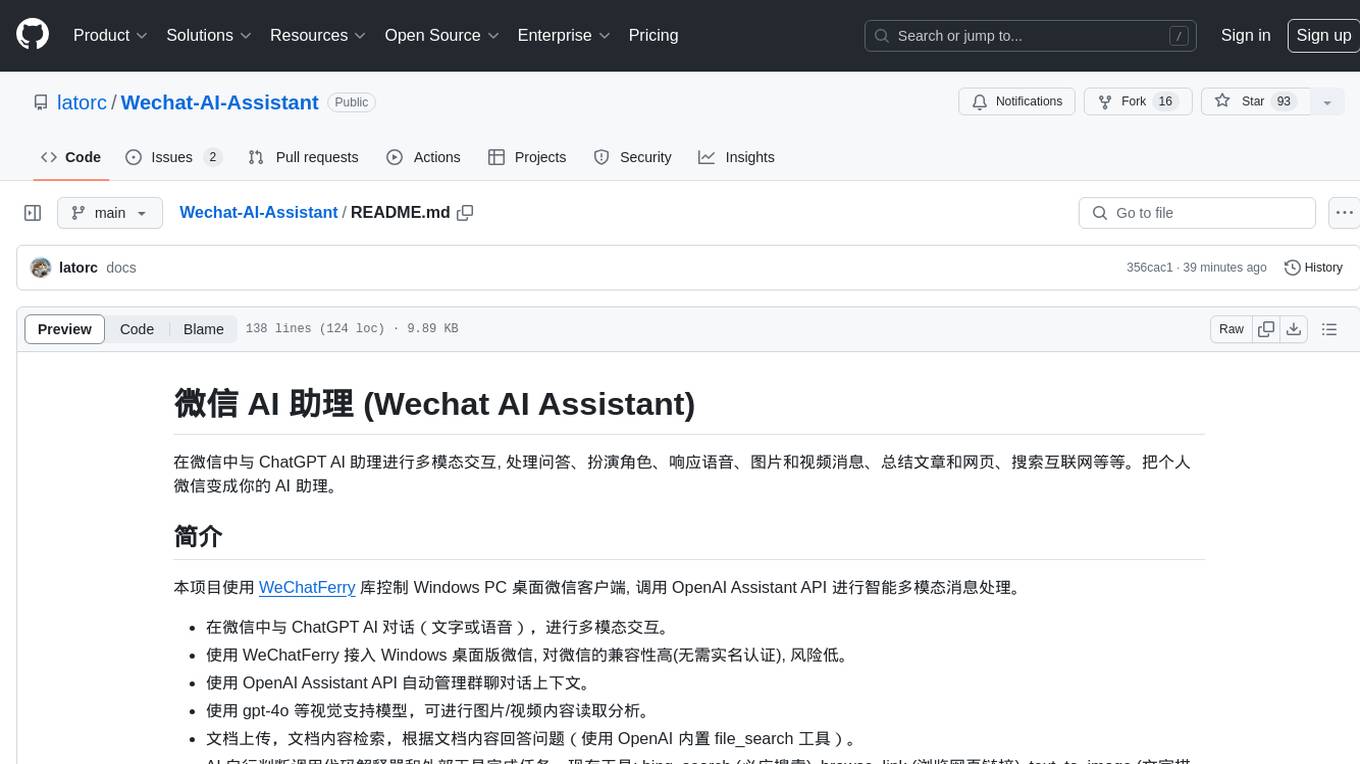
Wechat-AI-Assistant
Wechat AI Assistant is a project that enables multi-modal interaction with ChatGPT AI assistant within WeChat. It allows users to engage in conversations, role-playing, respond to voice messages, analyze images and videos, summarize articles and web links, and search the internet. The project utilizes the WeChatFerry library to control the Windows PC desktop WeChat client and leverages the OpenAI Assistant API for intelligent multi-modal message processing. Users can interact with ChatGPT AI in WeChat through text or voice, access various tools like bing_search, browse_link, image_to_text, text_to_image, text_to_speech, video_analysis, and more. The AI autonomously determines which code interpreter and external tools to use to complete tasks. Future developments include file uploads for AI to reference content, integration with other APIs, and login support for enterprise WeChat and WeChat official accounts.
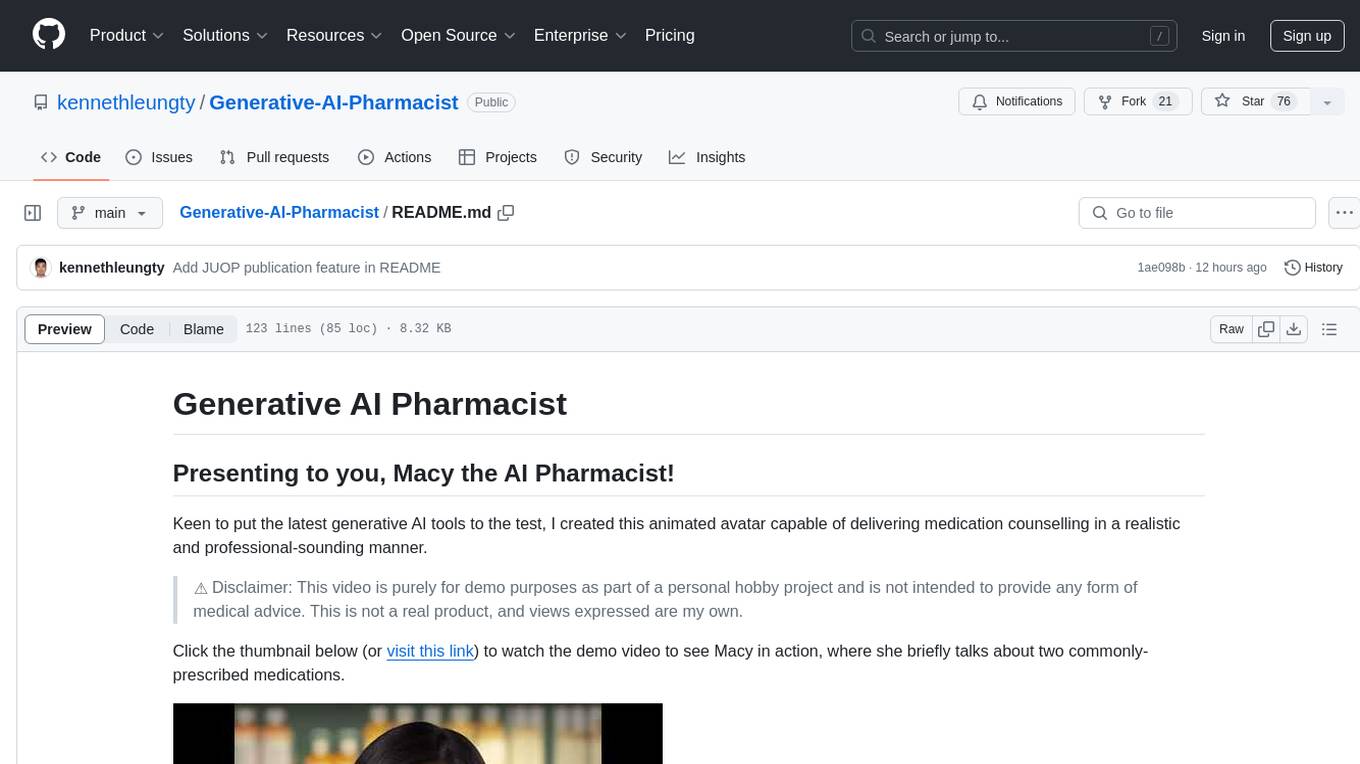
Generative-AI-Pharmacist
Generative AI Pharmacist is a project showcasing the use of generative AI tools to create an animated avatar named Macy, who delivers medication counseling in a realistic and professional manner. The project utilizes tools like Midjourney for image generation, ChatGPT for text generation, ElevenLabs for text-to-speech conversion, and D-ID for creating a photorealistic talking avatar video. The demo video featuring Macy discussing commonly-prescribed medications demonstrates the potential of generative AI in healthcare communication.
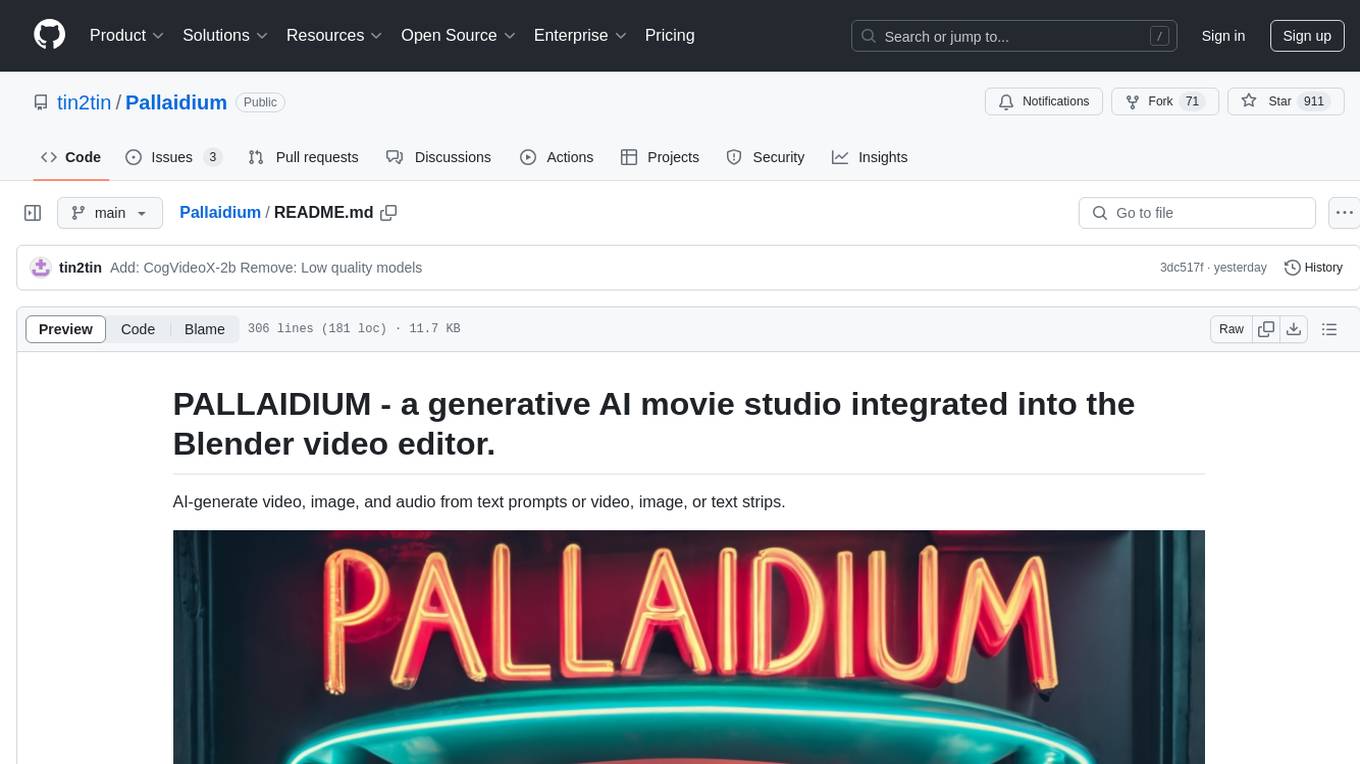
Pallaidium
Pallaidium is a generative AI movie studio integrated into the Blender video editor. It allows users to AI-generate video, image, and audio from text prompts or existing media files. The tool provides various features such as text to video, text to audio, text to speech, text to image, image to image, image to video, video to video, image to text, and more. It requires a Windows system with a CUDA-supported Nvidia card and at least 6 GB VRAM. Pallaidium offers batch processing capabilities, text to audio conversion using Bark, and various performance optimization tips. Users can install the tool by downloading the add-on and following the installation instructions provided. The tool comes with a set of restrictions on usage, prohibiting the generation of harmful, pornographic, violent, or false content.
For similar jobs

weave
Weave is a toolkit for developing Generative AI applications, built by Weights & Biases. With Weave, you can log and debug language model inputs, outputs, and traces; build rigorous, apples-to-apples evaluations for language model use cases; and organize all the information generated across the LLM workflow, from experimentation to evaluations to production. Weave aims to bring rigor, best-practices, and composability to the inherently experimental process of developing Generative AI software, without introducing cognitive overhead.

LLMStack
LLMStack is a no-code platform for building generative AI agents, workflows, and chatbots. It allows users to connect their own data, internal tools, and GPT-powered models without any coding experience. LLMStack can be deployed to the cloud or on-premise and can be accessed via HTTP API or triggered from Slack or Discord.

VisionCraft
The VisionCraft API is a free API for using over 100 different AI models. From images to sound.

kaito
Kaito is an operator that automates the AI/ML inference model deployment in a Kubernetes cluster. It manages large model files using container images, avoids tuning deployment parameters to fit GPU hardware by providing preset configurations, auto-provisions GPU nodes based on model requirements, and hosts large model images in the public Microsoft Container Registry (MCR) if the license allows. Using Kaito, the workflow of onboarding large AI inference models in Kubernetes is largely simplified.

PyRIT
PyRIT is an open access automation framework designed to empower security professionals and ML engineers to red team foundation models and their applications. It automates AI Red Teaming tasks to allow operators to focus on more complicated and time-consuming tasks and can also identify security harms such as misuse (e.g., malware generation, jailbreaking), and privacy harms (e.g., identity theft). The goal is to allow researchers to have a baseline of how well their model and entire inference pipeline is doing against different harm categories and to be able to compare that baseline to future iterations of their model. This allows them to have empirical data on how well their model is doing today, and detect any degradation of performance based on future improvements.

tabby
Tabby is a self-hosted AI coding assistant, offering an open-source and on-premises alternative to GitHub Copilot. It boasts several key features: * Self-contained, with no need for a DBMS or cloud service. * OpenAPI interface, easy to integrate with existing infrastructure (e.g Cloud IDE). * Supports consumer-grade GPUs.

spear
SPEAR (Simulator for Photorealistic Embodied AI Research) is a powerful tool for training embodied agents. It features 300 unique virtual indoor environments with 2,566 unique rooms and 17,234 unique objects that can be manipulated individually. Each environment is designed by a professional artist and features detailed geometry, photorealistic materials, and a unique floor plan and object layout. SPEAR is implemented as Unreal Engine assets and provides an OpenAI Gym interface for interacting with the environments via Python.

Magick
Magick is a groundbreaking visual AIDE (Artificial Intelligence Development Environment) for no-code data pipelines and multimodal agents. Magick can connect to other services and comes with nodes and templates well-suited for intelligent agents, chatbots, complex reasoning systems and realistic characters.

